Seki Kanetsune
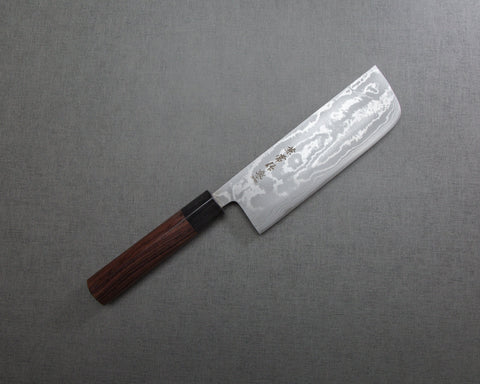
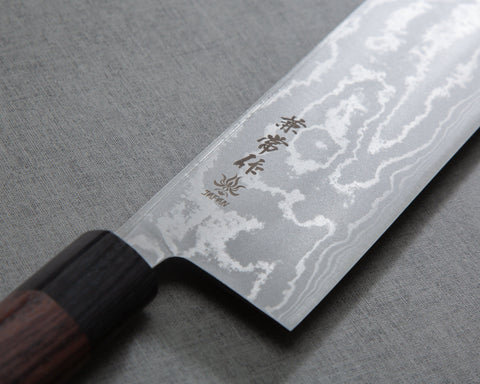
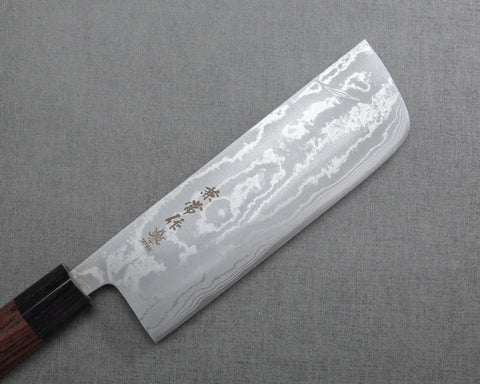
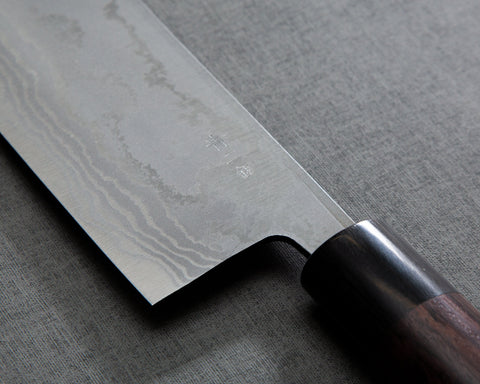
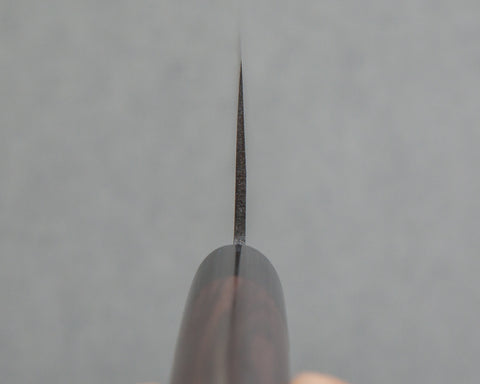
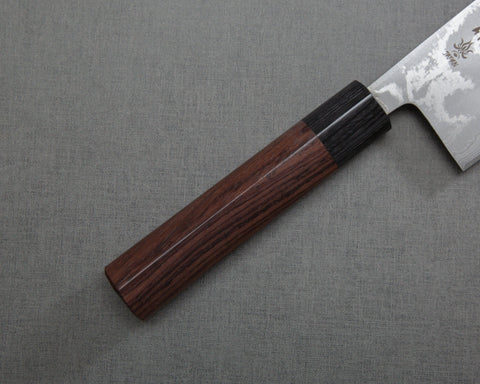
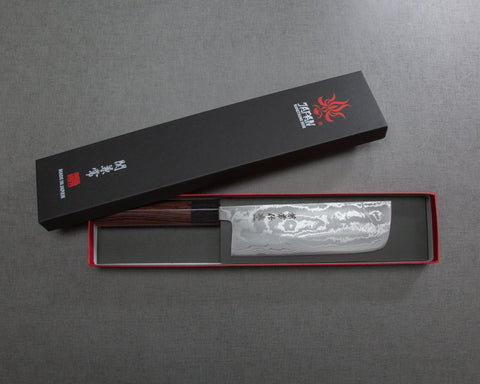
Seki Kanetsune "Zen-Bokashi" Aogami #2 Damascus 165mm Nakiri
Pickup currently unavailable
This nakiri knife from Kanetsune’s "Zen-Bokashi” series is made with Aogami #2 steel core with 11 layers of Damascus cladding. Heat-treated to 61-62 HRC, the blade offers great edge retention capabilities and thinness behind-the-edge. Paired with a wa-handle made of red sandalwood with a black plywood kuchiwa, the knife offers a relatively affordable entry to etched Damascus Aogami #2 knives, with a decent fit and finish.
Spec:
- Origin (Made in): Seki, Gifu Prefecture, Japan
- Brand: Meisho Kanetsune (part of Kanetsune Seki)
- Model No.: KC-463
- Knife Type: Nakiri
- Blade
- Construction: San Mai
- Grind: Double-edged Blade (50/50 Grind)
- Hagane (Core Steel): Aogami #2 (Blue #2)
- Jigane (Cladding): Soft Iron
- Hardness: 61-62 HRC
- Hand-sharpened
- Blade Finishes:
- Damascus
- Kasumi Polish
- Blade Length: 165mm (6.5")
- Blade Height (at heel): 51mm
- Spine Thickness
- Above heel: 2.5mm
- Middle: 1.7mm
- Handle
- Shape: Marushinogi (D-shaped)
- Material: Red Sandalwood
- Kuchiwa: Black Plywood
- Length: 128mm
- Overall Length: 306mm
- Weight: 132g (4.66oz)
- Mark (Front): In Japanese Kanji "Kanetsune Made" (兼常作)
- Engraved Mark (Back): In Japanese Kanji "Blue #2 Steel" (青二鋼)
About Kanetsune Seki 関兼常 / Kitasho 北正
The owner of Kanetsune Seki brand — Kitasho — has been making knives in pre-war Japan, in Seki City (関市) which has over 800 years of blade-making history. After the war, they established the Kitamura Shoten, which led to the current Kitasho company. The Kanetsune (兼常) brand is named after a famous sword-smith who lived in the Muromachi period around 14-15 century. Making different series of knives under brands including Kanemasa (兼正作), Honsho Kanemasa (本匠兼正作), and Minamoto Kanemasa (源兼正), Kitasho Company is on the mission of passing down Seki’s 8 centuries long knife-making techniques and traditions.
Care:
Aogami #2 (Blue #2) steel is a premium Japanese high carbon steel for knife making. Despite some corrosion resistant quality (for a carbon steel), it is not stainless, therefore you should wipe your knife dry after each use. Patina will develop over time. Rust may develop if left in prolonged contact with water or acidic food. Use a rust eraser to clean if rusts develop. Avoid cutting into bones, frozen foods, hard fruit pits.
Cutting Surface:
Recommended cutting surface: wood, rubberized boards and high-end composites, and quality plastics such as polyethene make acceptable cutting surfaces, and will help protect and prolong knife’s edge. AVOID glass, metal, countertops, and other rigid, non-forgiving surfaces.
Sharpening:
We recommend sharpening all quality Japanese knives on whetstones, as we believe they yield the best results for your knives.
Free Shipping
Free Shipping on most orders.
30 Days Return
Return unused within 30 days for a full refund, no questions asked (terms apply).
Top Japanese Makers
All knives made in Japan by top Japanese knife makers.
About
Burrfection Store sources professionally designed sharpening products, and knives from top Japanese craftsmen.
